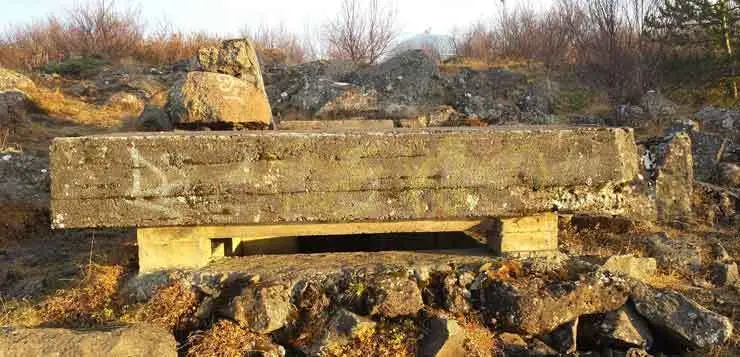Free and exclusive discount codes for hundreds of tours and & travel services in Iceland
Subscribe to instantly receive discount codes for tours, car rental, camper van rental, and outdoor clothing rental. Thank you! ❤️ Jon Heidar, Editor of Stuck in Iceland Travel MagazineThe British occupied Iceland on the 10th of May 1940, the same day that the German invaded Belgium, the Netherlands, and France. The primary purpose of the occupation was to strengthen Britain’s position in the battle of the Atlantic. At this time, German submarines were wreaking havoc on British shipping. The British were stretched thin, and they quickly negotiated with the Americans to protect Iceland, even if the United States were not formally at war with the Axis powers.
The pivotal role of Iceland in World War
In the battle of the Atlantic, Iceland played a pivotal role. Iceland was also a hub for the arctic allied convoys that undertook the perilous journey north to supply the Soviet Union in its titanic struggle against Germany. A major port for
Iceland was catapulted into modernity by World War 2
Iceland was never the same after the invasion. The British and the subsequent US occupation of Iceland transformed the country. The move of people from the rural countryside to the towns and villages on the coast was accelerated, and the occupying forces paid for work in hard currency which was a novelty for many. The memories from the occupation have faded, but the consensus is that Iceland has catapulted into the future. It is telling that people were still living in dilapidated military housing in the sixties in Reykjavik.
Iceland was occupied by skinny teenagers
My grandparents, who were teenagers in the northern town of Akureyri at the time, remembered the dismal state of the British soldiers who “invaded” Iceland. These skinny and pale teenagers had skimpy clothing and outdated weapons. The consensus amongst Icelanders was that the Germans would have an easy time with those boys if they ever invaded. A black market quickly emerged where local ladies would knit woolen mittens for the soldiers. But since those traditional woolen mittens only had one thumb, you couldn’t shoot a rifle while wearing them. Officers, who probably had gloves themselves and nice overcoats, discovered this fact and forbade their soldiers to buy them, but this lucrative but illicit trade persisted. My grandfather agreed that you wouldn’t be much of a use in a battle if you had too cold hands to shoot a gun. They were, however, very impressed with the Americans who had everything.
Obey my great-grandfather, or else
My grandmother was a teenager during the war, and her father strictly forbade his daughters to interact with foreign soldiers. To demonstrate that he was not a man you disobeyed, my grandmother told me a story about when she was walking home one afternoon. She had to go past American anti-aircraft batteries when an alarm rang out. An enemy plane flew over the town, and the Americans opened fire. The soldiers screamed at her to take cover and tried to put a helmet on her head, but my teenage grandma walked straight on, neither looking left nor right. She would obey her father and not acknowledge the soldiers’ existence, even if soldiers were screaming, artillery was firing, and shrapnel was raining down.
Visit Howitzer Hill
The best way to discover World War 2 ruins in Reykjavik is to head to the Pearl. This is a pretty glass dome building near the city center. Perlan is built on hot water tanks, hosts excellent exhibitions, and has a nice view of the city from its observation deck. The building sits on top of a wooded hill right next to Reykjavik airport. The British built the airport so the hill next to it became a key location in the defense of Reykjavik in World War 2. Today it has many signs that help world war 2 enthusiasts to explore the remains from the war


West from the observation deck is a path that leads to a pillbox and the entry to the underground command center used in case of German invasion and attack on the airfield. The British pulled all the stops when fortifying the hill by the airport. So much so that the British soldiers nicknamed it Howitzer hill.

A bit further west is a site that once contained fuel tanks for the airfield. The best way to explore this site is to go to the parking lot of a nearby gym. From there, climb down the stairs to the series of foundations. – see map below.

The fuel tanks were installed in sheer rock to shield them from air raids. Explore around the hill, which has a lot of remnants from World War 2.

Another relatively easy-to-find remnant of World War 2 is an observation post at the western coast of Reykjavik at Grotta. Imagine the sheer boredom and cold that the soldiers manning it must have experienced. Still, probably it was better than being shot at!

Other noteworthy World War 2 places in Iceland
The fjord of Hvalfjörður was an important port for the battle of the North Atlantic and an assembly point for the convoys heading up to the Soviet Union. In Seyðisfjörður, in the east of Iceland, there is a really nice World War 2 museum.
How to get to Howitzer hill and see World War 2 Reykjavik
Öskjuhlíð is near the city center and Reykjavik Airport.
The best way to explore the site of the fuel tanks is from the parking lot at the MMA gym Mjölnir.




